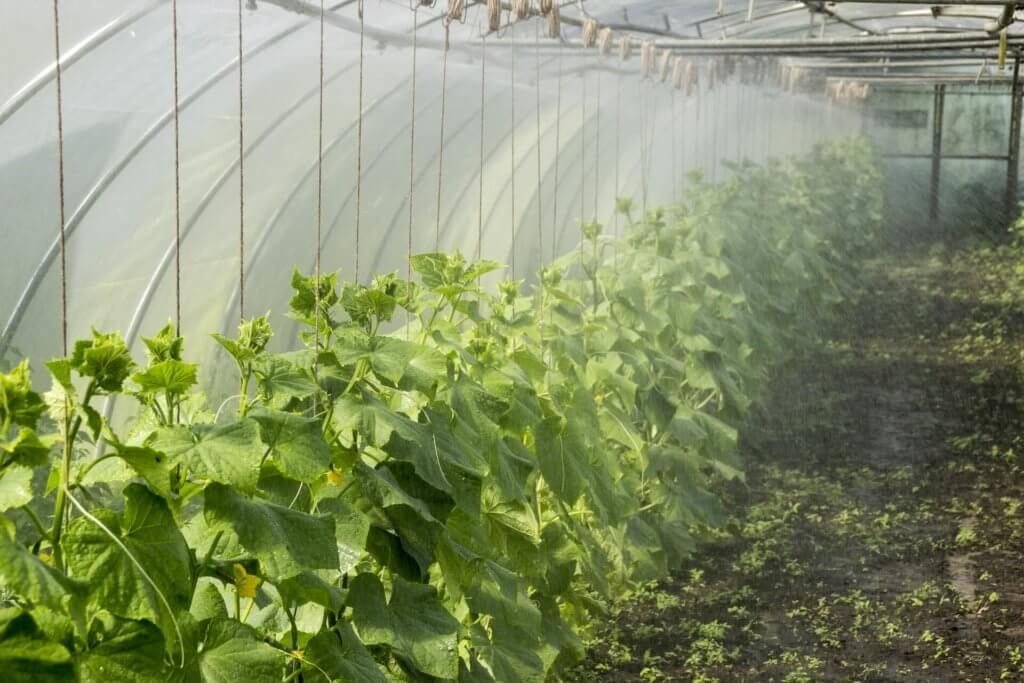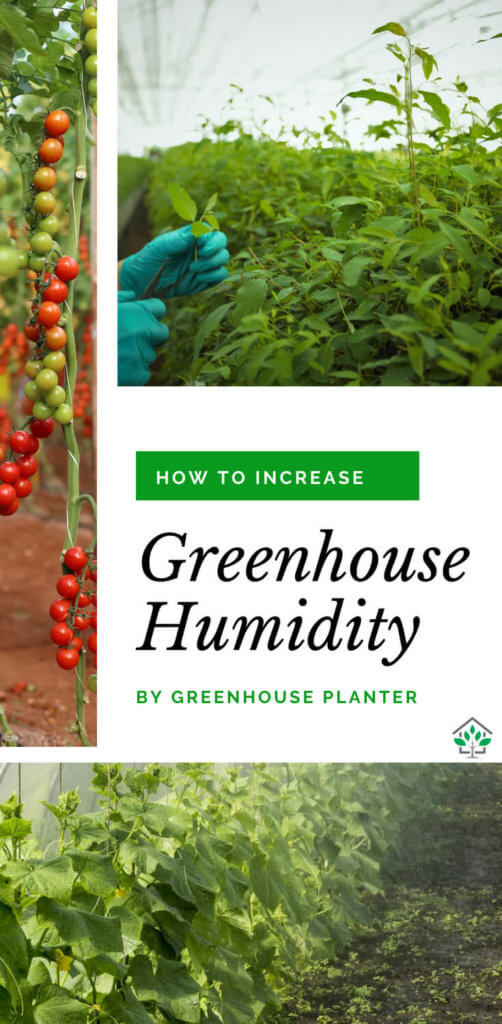![]()
Plant Dreams, Grow Gardens
Do you have Problems with the humidity levels in your greenhouse? or you want to increase humidity in greenhouse? Don’t worry about it. Although setting your crops inside a greenhouse makes dealing with climate variables a little easier, you have to remember that there is still a lot of work to do before your plants are 100% comfortable.
To achieve the perfect humidity levels, your greenhouse must have three fundamental things: good heating, an efficient ventilation system – whether natural or artificial – and, above all, a very, very, very thorough and precise control of temperatures.
Unlock the potential of your garden with GreenhousePlanter – explore our PRODUCTS today!

The first thing you have to take into account, once again, is that plants are like human beings. They are alive, and they can be left out of breath like you when summer comes with its terrible waves of heat. However, unlike us, they can’t stand in front of a fan or take a cold shower on their own. They need a farmer to look after them.
Today you may learn an important secret that will be useful for both agriculture and life: devices such as meters or indicators, while serving as a tool, will not do all the work for you. This does not mean that you have been deceived and that you should go to the store to demand your money back, but that you should be aware that these values are approximations and that you should learn to work accordingly.
Relative humidity sensors are used to measure the humidity in a greenhouse. By name, you can probably imagine what they are for. But not so fast! It is not as simple as you think.
Relative humidity sensors do not tell us the absolute amount of water that the air in our greenhouse can retain. To make the right calculation, it is necessary to know the temperature of the mini-ecosystem created and, from this information, calculate the VPD: Vapor Pressure Deficit.
The Vapor Pressure Deficit, which we will now begin to call VPD for practical reasons, is an indicator that allows us to easily measure the climate and the humidity that is produced inside a greenhouse.
The VPD helps us to assess the potential threat of pests, fungi or diseases that may spread in our micro-ecosystem, as well as the potential for condensation. But… how does it do that? How can it provide us with all that information?
Very simple! This indicator measures the difference (in humidity) between the humidity in a specific period of time and the amount of humidity that can hold the air at a temperature when the air becomes saturated – when condensation begins – and shows how easily the crop can transpire.
By handling this set of data, an average temperature can be established for the inside of our greenhouse, which allows an appropriate humidity level to be produced for the crop in which we are working on.
Why is the temperature of the crop so important for maintaining a good level of humidity in our greenhouse? Let’s start by understanding the most important thing: the amount of humidity that can be absorbed by the air (not just in a greenhouse, but in any ecosystem) depends on the temperature it has.
Hot air has the chemical property of being able to absorb more water vapor than cold air. This water vapor has a lower density than air, and when mixed with air it produces what we will call, for practical reasons, ” humid air “. This humid air is much denser than dry air.
Because it is so dense, it does not rise directly into the atmosphere, but it must release some of the weight it bears on it first. As a result, it begins to release some of that water vapor, which translates into what we know as humidity.
Having understood this process, we can get an idea of the importance of temperature for the micro-ecosystem of our greenhouse.
A few decades ago, heating systems with which greenhouses used to work were quite primitive, so many farmers preferred to avoid them. However, today’s technological advances in greenhouse structure offer farmers a wide range of opportunities.
Currently, two basic types of crop heating are being worked on: the first consists of heating only the roots of the crops, while the other works by regulating the average temperature of the entire greenhouse. As you can imagine, both modalities have their pros and cons.
The first, although it helps to preserve energy resources – since only a small part is invested in heating a small area – does not have good results when it comes to changing the average temperature in the environment.
On the other hand, the second one has an inverse result. It invests a greater amount of resources but keeps the greenhouse’s micro-ecosystem warm and pleasant for the plants.
In short, the choice of which heating system to use will depend on the needs of the farmer and the hostility of the climate in which he or she finds himself or herself.
As I mentioned earlier, many of the decisions regarding the construction and maintenance of our greenhouses are not strictly about how much technology or money we want, but how much of it is needed and can be used to the full.
Until a few years ago, most farmers designed their greenhouses to ventilate naturally: with windows. Let nature do its work. Let the planet itself provide the ideal conditions.
However, in view of the need to be able to diversify the variety of crops in every corner of the world ( yes, including the Himalayas) despite hostile climates, various mechanical heating systems have been developed which, thanks to the wonder of engineering, are giving incredible results.
Natural ventilation systems are basically a total surrender to the designs of nature. That is to say, to take advantage of its resources to keep our greenhouse cool and ventilated. Natural ventilation systems work on the basis of two physical phenomena:
Although this type of ventilation is inexpensive – practically free, in fact – it has certain disadvantages. Because its operation depends on wind speed, it tends to be irregular. For example, on hot or windy days, it is not functional.
Mechanical ventilation requires inlet vents, outlet vents and electricity to operate the vents.
When the design of the greenhouse is appropriate for the place where it is installed, mechanical ventilation is adequate to provide proper cooling under a great variety of climatic conditions of the place where it is installed.
Mechanical ventilation includes wet wall systems which are a type of evaporating cooling system.
Wet wall systems cool the air as it passes through a wet cushioned material; reducing the temperature and humidifying the greenhouse. This type of system works best in the hottest and driest climates, as its cooling capacity in humid climates is very limited.
Tell us your secret! In this great space, which brings together avid readers and lovers of agriculture, we like to share what we know – are you an experienced grower or just starting out? Let us know in your comments about how your experience has been.
You can also ask questions, give recommendations and help other members of the site to grow as farmers.

See you in the next post!
Comments are closed.
[…] You might need to increase the humidity inside your Greenhouse when the humidity level is low. You can also follow this guide on “How to increase Greenhouse Humidity“. […]
My husband and I are building a greenhouse this spring with recycled windows. I plan on using barrels of water painted black for temperature control in the cool seasons. I bought two misters and a timer for the faucet to hook them up. I know I need to be able to open windows for airflow. Any other tips? I’d rather make changes in the planning than later! Thanks! Oh we are in Michigan if that matters.